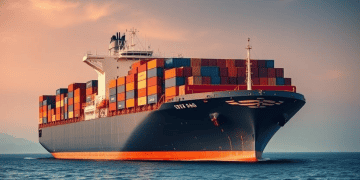Container freight rates for Chinese exports have dropped 28% since the beginning of 2025, marking the worst first-quarter performance in the past twenty years. According to the latest update from BIMCO, the China Containerized Freight Index (CCFI), which reflects export freight rates from ten major ports, has decreased significantly, moving from 1,548 at the start of the year to 1,112 by the end of the first quarter.
This decline was particularly driven by a substantial drop in spot freight rates. The Shanghai Containerized Freight Index (SCFI), which tracks spot rates for Shanghai exports, has seen a 46% fall, the largest first-quarter decrease since the SCFI’s inception in late 2009. Historically, the CCFI has typically declined by an average of only 2% during the first quarter, with declines greater than 10% occurring only four times, including last year’s drop of 24%.
Despite a promising start to the year, with export market volumes from East and Southeast Asia growing 20% year-on-year in January, container freight rates have continued to decline. Additionally, rerouting ships around the Cape of Good Hope continues to consume 10-12% of the global fleet’s capacity. Among the major east-west trade routes, those to Europe and the Mediterranean have seen the largest declines, with rates dropping 33% and 32%, respectively. North-south routes, including those to South Africa, Australia/New Zealand, South America, and West Africa, have also experienced significant rate reductions, with drops ranging from 26% to 40%. The only route not to experience a rate decrease was the trade between China and Japan.
Factors contributing to the downturn in freight rates include trade uncertainties, particularly the impact of tariff increases, which have negatively affected U.S. imports and global trade. These tariff hikes have contributed to the slowdown in global economic growth, influencing container freight rates indirectly. Looking ahead, as the global container ship fleet’s capacity is expected to grow by 5.4% in 2025, freight rates are anticipated to remain lower than in 2024. However, if volume growth stagnates and shipping routes return to normal, freight rates could approach levels seen in 2019.
Discover supply chain news insights on The Supply Chain Report. Enhance your international trade knowledge at ADAMftd.com with free tools.
#ContainerFreightRates #ChinaExports #FreightMarketTrends #GlobalTradeDecline #ShippingIndustry #TradeUncertainty #ContainerShipping #FreightRateDrop #SupplyChainImpact #GlobalEconomy
















